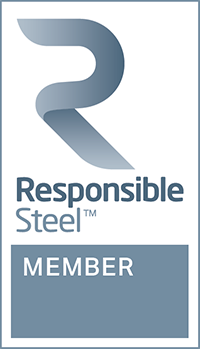Steel Driving the Future Mobility:
Hows and Whys
In this new age of increasing urbanisation and depleting natural resources, is steel going to be the material of choice for sustainable transportation and greener future? To answer how and why or why not, World Auto Steel’s Kate Hickey has examined the vital factors that could make steel the ultimate choice of manufacturing material for manufacturers, designers and owners of future modes of transport.
Lightweighting
Light weighting will continue to be important in order to balance small battery sizes with maximum range. The steel industry has been and will continue to develop products, such as the ever-growing family of Advanced High-Strength Steels (AHSS), to affordably meet the targets of mass reduction, fuel efficiency, and safety. Advancements in technology have made the strength of steel over 9 times stronger than what it was 50 years ago. JSW Steel is the first company to manufacture high-strength steel and advanced high-end steel products for its automotive segments in India.

Safety protection
While technological improvement is in full swing, it will take some time before all vehicles on the road can fully communicate with each other via connected devices. Therefore, the need for passive safety will still remain relevant in the foreseeable future. So, steel will still be needed to deliver on the unique properties of deflection and crash energy absorption. Battery encasements made from steel can provide the requisite structural integrity for crash management, as well as prevent damage and leakage of the battery pack.

Flexibility of design
Steel’s design flexibility and unique formability will help futuristic designers use their creativity to the fullest in driving functionality and aesthetics. Steel can provide the needed strength while keeping the material thin, which leads to more room in the passenger cabin for new seating arrangements. Steel will manage the loads associated with passengers in multiple and diverse seating configurations.

Durability and cost advantage
Steel lasts for a long time so it is highly cost effective in more ways than one. This makes it ideal for car fleet owners who provide ride sharing services. To manage the total cost of ownership and make their enterprise profitable, they will want durable, lasting vehicles that are affordable to own. Additionally, the superior acoustic performance of steel gives passengers a quieter cabin, resulting in a more pleasurable ride experience.

Environmental advantage
In a world where climate change is in the forefront of people’s concerns, vehicles that meet the highest environmental requirements will be favoured. Steel is the only material that is completely recyclable, and it has the best environmental performance over its entire life cycle compared to aluminium and carbon fibre.

Electrical steels
We are speeding towards the era of self-driving electric vehicles. Apart from supporting the environment, they will introduce a new kind of freedom to the driver and other passengers inside the vehicle to use their time for other activities or to just simply sit back and enjoy the views. Therefore, electrical steels are the essential material for the construction of motors and generators for electric vehicles. In fact, futuristic electric mobility is unimaginable without steel.

In the ultimate analysis, steel is the most environment-friendly material you can build into a car. Moreover, as steel can be infinitely recycled, both at the beginning and end of its production, this powerful alloy has a massive advantage over other materials, when sustainability is the call of the times. These factors make steel central to the revolutionary change in mobility, thanks to its strength, durability and environmental advantages.
Information sources: World Steel, Driving Using Steel






